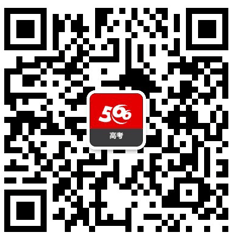| 第 1 页:听力 |
| 第 2 页:阅读理解 |
| 第 5 页:语言知识运用 |
| 第 6 页:写作 |
C
Before the 1830s,most newspapers were sold through annual subscriptions in America, usually $8 to $10 a year. Today $8 or $10 seems a small amount of money, but at that time these amounts were forbidding to most citizens. Accordingly, newspapers were read almost only by rich people in politics or the trades. In addition, most newspapers had little in them that would appeal to a mass audience. They were dull and visually forbidding. But the revolution that was taking place in the 1830s would change all that.
The trend, then, was toward the "penny paper"-a term referring to papers made widely available to the public. It meant any inexpensive newspaper; perhaps more importantly it meant newspapers that could be bought in single copies on the street.
This development did not take place overnight. It had been possible(but not easy)to buy single copies of newspapers before 1830,but this usually meant the reader had to go down to the printer's office to purchase a copy. Street sales were almost unknown. However, within a few years, street sales of newspapers would be commonplace in eastern cities. At first the price of single copies was seldom a penny-usually two or three cents was charged-and some of the older well-known papers charged five or six cents. But the phrase "penny paper " caught the public's fancy, and soon there would be papers that did indeed sell for only a penny.
This new trend of newspapers for "the man on the street" did not begin well. Some of the early ventures(企业)were immediate failures. Publishers already in business, people who were owners of successful papers, had little desire to change the tradition. It took a few youthful and daring businessmen to get the ball rolling.
28.Which of the following best describes newspapers in America before the 1830s?
A. Academic. B. Unattractive. C. Inexpensive. D. Confidential.
29.What did street sales mean to newspapers?
A. They would be priced higher. B. They would disappear from cities.
C. They could have more readers. D. They could regain public trust.
30.Who were the newspapers of the new trend targeted at?
A. Local politicians. B. Common people.
C. Young publishers. D. Rich businessmen.
31.What can we say about the birth of the penny paper?
A. It was a difficult process. B. It was a temporary success.
C. It was a robbery of the poor. D. It was a disaster for printers.
D
Monkeys seem to have a way with numbers.
A team of researchers trained three Rhesus monkeys to associate 26 clearly different symbols consisting of numbers and selective letters with 0-25 drops of water or juice as a reward. The researchers then tested how the monkeys combined—or added—the symbols to get the reward.
Here's how Harvard Medical School scientist Margaret Livingstone, who led the team, described the experiment: In their cages the monkeys were provided with touch screens. On one part of the screen, a symbol would appear, and on the other side two symbols inside a circle were shown. For example, the number 7 would flash on one side of the screen and the other end would have 9 and 8. If the monkeys touched the left side of the screen they would be rewarded with seven drops of water or juice; if they went for the circle, they would be rewarded with the sum of the numbers—17 in this example.
After running hundreds of tests, the researchers noted that the monkeys would go for the higher values more than half the time, indicating that they were performing a calculation, not just memorizing the value of each combination.
When the team examined the results of the experiment more closely, they noticed that the monkeys tended to underestimate(低估)a sum compared with a single symbol when the two were close in value—sometimes choosing, for example, a 13 over the sum of 8 and 6. The underestimation was systematic: When adding two numbers, the monkeys always paid attention to the larger of the two, and then added only a fraction(小部分)of the smaller number to it.
"This indicates that there is a certain way quantity is represented in their brains, "Dr. Livingstone says. “But in this experiment what they're doing is paying more attention to the big number than the little one.”
32. What did the researchers do to the monkeys before testing them?
A. They fed them. B. They named them.
C. They trained them. D. They measured them.
33. How did the monkeys get their reward in the experiment?
A. By drawing a circle. B. By touching a screen.
C. By watching videos. D. By mixing two drinks.
34. What did Livingstone's team find about the monkeys?
A. They could perform basic addition. B. They could understand simple words.
C. They could memorize numbers easily. D. They could hold their attention for long.
35. In which section of a newspaper may this text appear?
A. Entertainment. B. Health. C. Education. D. Science.

微信搜索"考试吧高中资讯" 关注也可获得高考秘籍
相关推荐:
2019年高考答案pdf下载 | 2019年高考真题pdf下载![]()
2019高考答案![]() | 2019高考真题 | 关注微信对答案 | 2019高考作文
| 2019高考真题 | 关注微信对答案 | 2019高考作文
·云南2021年高职专项志愿填报将于8月9日-12日进行 (2021-8-9 17:30:54)
·云南2021年高考第六轮征集志愿8月5日-6日进行 (2021-8-5 15:46:04)
·2021年云南高考第五轮征集志愿将于7月29日进行 (2021-7-29 10:46:10)
·2021云南高考第四轮征集志愿将于7月25日-26日进行 (2021-7-26 15:05:33)
·2021年云南高考第三轮征集志愿7月23日-24日进行 (2021-7-23 16:06:11)
·免费真题 ·模考试题

2022年上海高考作文题目已公布
2022年湖南高考地理答案已公布
2022年湖南高考生物答案已公布
2022年广东高考地理试题答案已公布
2022年湖南高考生物真题已公布
2022年广东高考真题及答案汇总
2022年浙江高考真题及答案汇总
2022年广东高考生物真题及答案已公布(完整版)
2022年浙江高考政治真题及答案已公布(完整版)
| 国家 | 北京 | 天津 | 上海 | 重庆 |
| 河北 | 山西 | 辽宁 | 吉林 | 江苏 |
| 浙江 | 安徽 | 福建 | 江西 | 山东 |
| 河南 | 湖北 | 湖南 | 广东 | 广西 |
| 海南 | 四川 | 贵州 | 云南 | 西藏 |
| 陕西 | 甘肃 | 宁夏 | 青海 | 新疆 |
| 黑龙江 | 内蒙古 | 更多 | ||




